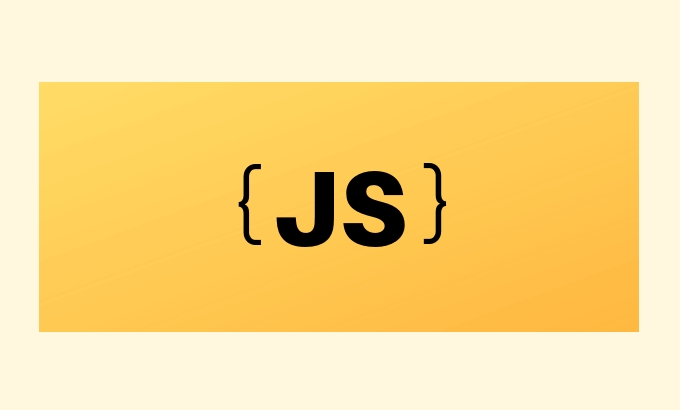Deep Dive into JavaScript Module Bundlers (Webpack, Vite, Parcel)
Jul 26, 2025 am 07:41 AMThe mainstream module packaging tools in front-end development include Webpack, Vite and Parcel, each suitable for different scenarios. 1.Webpack has powerful functions and rich plug-in ecosystem. It is suitable for large projects but complex configurations and slow construction speed; 2.Vite uses native ESM to achieve rapid start-up, suitable for modern frameworks and small and medium-sized projects; 3.Parcel is known for zero configuration, suitable for small projects or rapid prototyping, but has low flexibility. Selection basis is: choose Webpack for large applications, Vite for modern frameworks, and Parcel for small projects without configuration.

In front-end development, module packaging tools have become an indispensable part. Especially after the JavaScript project becomes more and more complex, we no longer just write a few script files, but need to deal with various modules, dependencies and resource optimization. Webpack, Vite and Parcel are the three most mainstream module packers at present. They each have their own characteristics and are suitable for different scenarios.

Let’s take a look at the differences between them and their applicable scenarios from the perspective of actual use.
Webpack: powerful but slightly heavy configuration
Webpack is one of the earliest popular module packaging tools and is still the first choice for many large-scale projects. Its biggest feature is its rich plug-in ecosystem, supports advanced features such as code segmentation, lazy loading, etc. , which is very suitable for building complex SPAs (single-page applications).

-
advantage :
- The plug-in system is very mature and the community supports it extensively.
- Supports hot update (HMR), Tree Shaking, code splitting and other functions.
- It can handle various types of resources (JS, CSS, pictures, etc.).
-
shortcoming :

- The configuration is relatively complex and not friendly enough for beginners.
- The build speed is slow, especially in large projects.
If you are doing enterprise-level projects or need to carefully control the packaging process, Webpack is still a good choice. However, its learning curve is a little steeper than the other two.
Vite: The new favorite of modern front-end development
Vite appeared late, but it quickly became popular with its fast cold boot, native ES module support and excellent developer experience , especially in the Vue and React communities.
-
Core advantages :
- Use browser native ES module (ESM) to achieve instant startup without packaging and compilation.
- The development server started almost instantly, and the HMR was as fast as lightning.
- Supports modern syntax such as TypeScript, JSX, Vue, React, etc. out of the box.
-
Applicable scenarios :
- Front-end prototype development or small and medium-sized projects.
- Modern projects using Vue 3 or React.
- Teams that require high development experience and want to reduce waiting time.
Vite is built with a lighter weight and is especially suitable for local development environments. It will also be packaged and optimized through Rollup when building production environments.
Parcel: Zero configuration packaging tool
The biggest selling point of Parcel is "zero configuration", which means you can start packaging projects without writing any configuration files. It is suitable for those who want to get started quickly and don't want to mess with configurations.
-
advantage :
- After installation, run the command directly to package it.
- Automatically process CSS, pictures, TypeScript, Flow and other resources.
- Supports HMR and Tree Shaking.
-
shortcoming :
- The plug-in ecosystem is not as mature as Webpack.
- The configuration flexibility is low and it is not suitable for highly customized needs.
Parcel is suitable for small projects, static websites, and rapid prototype construction. If you just want to package an HTML JS folder structure into a version that is available in the production environment, Parcel is likely to be more troublesome than Webpack.
How to choose? A brief comparison:
- If you need to deeply customize and build large-scale applications , choose Webpack .
- If you pursue development efficiency and use modern frameworks , choose Vite .
- If you want to get started quickly and don't need too many configurations, choose Parcel .
Of course, these three are not completely mutually exclusive. For example, some projects use Vite to improve efficiency during the development phase, and switch to Webpack when building deployments to get finer granular control.
In general, these packaging tools are constantly evolving, and which one is more about your project type and team habits. Webpack is old but stable, Vite is new but efficient, and Parcel is simple but practical. Basically all that is it, just choose as needed.
The above is the detailed content of Deep Dive into JavaScript Module Bundlers (Webpack, Vite, Parcel). For more information, please follow other related articles on the PHP Chinese website!

Hot AI Tools

Undress AI Tool
Undress images for free

Undresser.AI Undress
AI-powered app for creating realistic nude photos

AI Clothes Remover
Online AI tool for removing clothes from photos.

Clothoff.io
AI clothes remover

Video Face Swap
Swap faces in any video effortlessly with our completely free AI face swap tool!

Hot Article

Hot Tools

Notepad++7.3.1
Easy-to-use and free code editor

SublimeText3 Chinese version
Chinese version, very easy to use

Zend Studio 13.0.1
Powerful PHP integrated development environment

Dreamweaver CS6
Visual web development tools

SublimeText3 Mac version
God-level code editing software (SublimeText3)

Hot Topics
 How does garbage collection work in JavaScript?
Jul 04, 2025 am 12:42 AM
How does garbage collection work in JavaScript?
Jul 04, 2025 am 12:42 AM
JavaScript's garbage collection mechanism automatically manages memory through a tag-clearing algorithm to reduce the risk of memory leakage. The engine traverses and marks the active object from the root object, and unmarked is treated as garbage and cleared. For example, when the object is no longer referenced (such as setting the variable to null), it will be released in the next round of recycling. Common causes of memory leaks include: ① Uncleared timers or event listeners; ② References to external variables in closures; ③ Global variables continue to hold a large amount of data. The V8 engine optimizes recycling efficiency through strategies such as generational recycling, incremental marking, parallel/concurrent recycling, and reduces the main thread blocking time. During development, unnecessary global references should be avoided and object associations should be promptly decorated to improve performance and stability.
 How to make an HTTP request in Node.js?
Jul 13, 2025 am 02:18 AM
How to make an HTTP request in Node.js?
Jul 13, 2025 am 02:18 AM
There are three common ways to initiate HTTP requests in Node.js: use built-in modules, axios, and node-fetch. 1. Use the built-in http/https module without dependencies, which is suitable for basic scenarios, but requires manual processing of data stitching and error monitoring, such as using https.get() to obtain data or send POST requests through .write(); 2.axios is a third-party library based on Promise. It has concise syntax and powerful functions, supports async/await, automatic JSON conversion, interceptor, etc. It is recommended to simplify asynchronous request operations; 3.node-fetch provides a style similar to browser fetch, based on Promise and simple syntax
 JavaScript Data Types: Primitive vs Reference
Jul 13, 2025 am 02:43 AM
JavaScript Data Types: Primitive vs Reference
Jul 13, 2025 am 02:43 AM
JavaScript data types are divided into primitive types and reference types. Primitive types include string, number, boolean, null, undefined, and symbol. The values are immutable and copies are copied when assigning values, so they do not affect each other; reference types such as objects, arrays and functions store memory addresses, and variables pointing to the same object will affect each other. Typeof and instanceof can be used to determine types, but pay attention to the historical issues of typeofnull. Understanding these two types of differences can help write more stable and reliable code.
 JavaScript time object, someone builds an eactexe, faster website on Google Chrome, etc.
Jul 08, 2025 pm 02:27 PM
JavaScript time object, someone builds an eactexe, faster website on Google Chrome, etc.
Jul 08, 2025 pm 02:27 PM
Hello, JavaScript developers! Welcome to this week's JavaScript news! This week we will focus on: Oracle's trademark dispute with Deno, new JavaScript time objects are supported by browsers, Google Chrome updates, and some powerful developer tools. Let's get started! Oracle's trademark dispute with Deno Oracle's attempt to register a "JavaScript" trademark has caused controversy. Ryan Dahl, the creator of Node.js and Deno, has filed a petition to cancel the trademark, and he believes that JavaScript is an open standard and should not be used by Oracle
 React vs Angular vs Vue: which js framework is best?
Jul 05, 2025 am 02:24 AM
React vs Angular vs Vue: which js framework is best?
Jul 05, 2025 am 02:24 AM
Which JavaScript framework is the best choice? The answer is to choose the most suitable one according to your needs. 1.React is flexible and free, suitable for medium and large projects that require high customization and team architecture capabilities; 2. Angular provides complete solutions, suitable for enterprise-level applications and long-term maintenance; 3. Vue is easy to use, suitable for small and medium-sized projects or rapid development. In addition, whether there is an existing technology stack, team size, project life cycle and whether SSR is needed are also important factors in choosing a framework. In short, there is no absolutely the best framework, the best choice is the one that suits your needs.
 Understanding Immediately Invoked Function Expressions (IIFE) in JavaScript
Jul 04, 2025 am 02:42 AM
Understanding Immediately Invoked Function Expressions (IIFE) in JavaScript
Jul 04, 2025 am 02:42 AM
IIFE (ImmediatelyInvokedFunctionExpression) is a function expression executed immediately after definition, used to isolate variables and avoid contaminating global scope. It is called by wrapping the function in parentheses to make it an expression and a pair of brackets immediately followed by it, such as (function(){/code/})();. Its core uses include: 1. Avoid variable conflicts and prevent duplication of naming between multiple scripts; 2. Create a private scope to make the internal variables invisible; 3. Modular code to facilitate initialization without exposing too many variables. Common writing methods include versions passed with parameters and versions of ES6 arrow function, but note that expressions and ties must be used.
 Handling Promises: Chaining, Error Handling, and Promise Combinators in JavaScript
Jul 08, 2025 am 02:40 AM
Handling Promises: Chaining, Error Handling, and Promise Combinators in JavaScript
Jul 08, 2025 am 02:40 AM
Promise is the core mechanism for handling asynchronous operations in JavaScript. Understanding chain calls, error handling and combiners is the key to mastering their applications. 1. The chain call returns a new Promise through .then() to realize asynchronous process concatenation. Each .then() receives the previous result and can return a value or a Promise; 2. Error handling should use .catch() to catch exceptions to avoid silent failures, and can return the default value in catch to continue the process; 3. Combinators such as Promise.all() (successfully successful only after all success), Promise.race() (the first completion is returned) and Promise.allSettled() (waiting for all completions)
 What is the cache API and how is it used with Service Workers?
Jul 08, 2025 am 02:43 AM
What is the cache API and how is it used with Service Workers?
Jul 08, 2025 am 02:43 AM
CacheAPI is a tool provided by the browser to cache network requests, which is often used in conjunction with ServiceWorker to improve website performance and offline experience. 1. It allows developers to manually store resources such as scripts, style sheets, pictures, etc.; 2. It can match cache responses according to requests; 3. It supports deleting specific caches or clearing the entire cache; 4. It can implement cache priority or network priority strategies through ServiceWorker listening to fetch events; 5. It is often used for offline support, speed up repeated access speed, preloading key resources and background update content; 6. When using it, you need to pay attention to cache version control, storage restrictions and the difference from HTTP caching mechanism.







